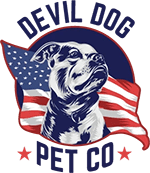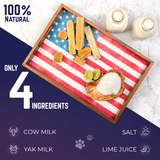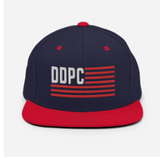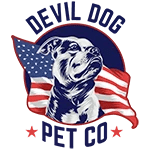Key Takeaways
- Bringing home a new puppy without the right gear leads to unnecessary challenges.
- A comprehensive puppy starter kit prevents first-week disasters.
- Having the right supplies helps establish leadership from day one.
- Proper preparation creates the foundation for a well-trained, confident dog.
- Skipping the guesswork reduces the risk of dogs ending up in shelters.
Table of Contents
- Complete Checklist, Every Essential Item for Your New Puppy
- Nutrition That Builds Champions, Selecting the Right Puppy Food & Treats
- Comfort & Security, Choosing the Best Crate, Bed, and Safe Spaces
- Feeding & Potty Schedules That Prevent Chaos
- Collars, Leashes, and ID, Keeping Your Puppy Safe Everywhere
- Safe, Engaging Toys & Chews, Beating Boredom and Bad Habits
- Grooming, Health, and Cleaning Essentials, From Day 1
- Puppy-Proofing Your Home, Step-By-Step Safety Checklist
- Starter Kit Showdown: Pre-Made vs. DIY, Which Approach Wins?
- Troubleshooting Real-World Problems, Leadership in Action
- Devil Dog Pet Co. Extreme Leadership Kit, What Sets Us Apart
- Your Puppy's Foundation for Lifelong Success
The Ultimate Puppy Starter Kit Checklist 2025
Bringing home a new puppy without the right gear is like deploying without ammunition, you're setting yourself up for chaos. A comprehensive puppy starter kit eliminates first-week disasters, establishes leadership from day one, and creates the foundation for a well-trained, confident dog. Skip the guesswork and rookie mistakes that land dogs in shelters. Himalayan Dog Chew Nuggets for Making Yak Chew Cheese Puffs are a smart addition to any kit, providing both entertainment and teething relief for your new pup.
The difference between overwhelmed owners and successful leaders? Preparation. Every item in your kit serves a specific mission: safety, structure, or enrichment. When our dog Dexter came home, we learned this lesson the hard way, chewed baseboards and sleepless nights taught us that proper gear isn't optional, it's tactical. For more guidance on choosing the best puppy food to fuel your new companion, check out our in-depth guide.
Puppy pads are another must-have for the early weeks, helping you manage accidents and maintain a clean home as your puppy adjusts to their new environment.
Download the FREE 10-Step Dog Prep Guide
Complete Checklist, Every Essential Item for Your New Puppy
Organization prevents panic. Break your puppy starter kit into five mission-critical categories, each serving a specific leadership function.
| Category | Absolute Essentials | Nice-to-Haves |
|---|---|---|
| Rest & Security | Wire crate with divider, washable bed, blanket | Crate cover, elevated cot, cooling mat |
| Nutrition | Puppy food (2-week supply), stainless bowls (2), water station | Puzzle feeders, treat pouch, food storage container |
| Safety | Adjustable collar, 6-ft leash, ID tags, baby gates | Harness, retractable leash, GPS tracker |
| Cleanup | Enzymatic cleaner, puppy pads, waste bags | Steam cleaner, odor eliminator, training bells |
| Enrichment | Split antler chew, rope toy, squeaky toy | Puzzle toys, snuffle mat, chew holder |
Sizing Intelligence: Crate should allow standing, turning, and lying flat, measure shoulder height plus 4 inches. Collar fits with two-finger gap. Chews must be longer than the muzzle to prevent choking.
Nutrition That Builds Champions, Selecting the Right Puppy Food & Treats

Puppy brains and bodies demand precision fuel. Adult dog food lacks the protein density (22-32%), fat content (8-17%), and DHA levels growing puppies require. Nutritional shortcuts create behavioral problems and health deficits that last a lifetime.
Transition food gradually over 7 days: Days 1-2 (75% old, 25% new), Days 3-4 (50/50), Days 5-6 (25% old, 75% new), Day 7 (100% new). Measure portions by weight, not volume, kibble density varies dramatically between brands.
For teething relief and mental stimulation, choose digestible chews that won't splinter. Split elk antlers expose tasty marrow while being gentler on developing teeth than whole antlers. Yak chews provide long-lasting entertainment without the mess of bully sticks. Avoid rawhide, it's chemically processed and creates blockage risks.
Pro Tip: Store kibble in airtight containers with gamma seal lids. Exposure to air destroys nutrients and invites pests. Calculate daily calories and limit treats to 10% of total intake.
Comfort & Security, Choosing the Best Crate, Bed, and Safe Spaces
Structure creates confidence. Wire crates offer visibility and ventilation while plastic models provide den-like security. Adjustable dividers prevent oversizing, too much space encourages elimination in the back corner.
Bedding must survive the puppy gauntlet: machine washable, chew-resistant, and sized for the crate. Raised-rim beds create security while waterproof liners protect against accidents. Puppies sleep 16-20 hours daily, making comfort non-negotiable.
Create distinct zones: crate for rest, playpen for supervised freedom, and designated "place" mat for training. This three-zone system teaches boundaries while providing structured choices. Introduce the crate with 5-minute positive sessions, favorite chew inside, door open, no pressure.
Feeding & Potty Schedules That Prevent Chaos
Predictable input creates predictable output. Consistent meal times regulate digestion and eliminate guesswork from housebreaking.
Feed your puppy at the same times daily, typically three meals for 8-12 week olds, transitioning to two meals by 6 months. Schedule potty breaks 15-30 minutes after each meal, plus immediately after waking and before bed.
| Puppy Age | Meals Per Day | Potty Frequency | Max Hold Time |
|---|---|---|---|
| 8-12 weeks | 3-4 meals | Every 1-2 hours | 2-3 hours |
| 3-6 months | 3 meals | Every 2-3 hours | 4-5 hours |
| 6+ months | 2 meals | Every 4-6 hours | 6-8 hours |
Log every meal and potty break in a notebook or phone app for the first month. This data reveals patterns and helps you predict accidents before they happen. Remove water bowls 2-3 hours before bedtime to reduce overnight accidents, but always provide fresh water during active hours. For a detailed walkthrough, see our step by step guide to potty train your puppy.
Collars, Leashes, and ID, Keeping Your Puppy Safe Everywhere

A properly fitted collar should allow two fingers underneath when fastened. Check weekly, growing puppies can outgrow collars in days. Choose adjustable buckle collars over slip collars for daily wear, and engrave ID tags with your phone number and "REWARD" to motivate returns.
Start with a 6-foot standard leash for training walks. Retractable leashes teach pulling and offer less control during critical socialization periods. Harnesses distribute pressure across the chest rather than the neck, making them ideal for pullers or dogs prone to tracheal issues.
Microchip your puppy within the first week, collars can slip off, but chips are permanent. Register the chip immediately and update contact information whenever you move. Keep a recent photo on your phone; clear identification speeds reunification if your puppy escapes.
Safe, Engaging Toys & Chews, Beating Boredom and Bad Habits
Teething peaks between 12-24 weeks when adult teeth push through tender gums. Provide appropriate outlets or your puppy will create their own, usually involving your shoes or furniture. Size chews larger than your puppy's mouth to prevent choking, and choose materials that soften gradually rather than splinter.
Top 3 Mistake-Proof Puppy Chews
- Split Elk Antlers: Expose tasty marrow for beginners, naturally shed and chemical-free
- Himalayan Yak Chews: Long-lasting, fully digestible, and gentle on developing teeth
- Bully Sticks: High-protein, single-ingredient treats that satisfy chewing instincts
Rotate toys weekly to maintain novelty. When your puppy chews something forbidden, immediately redirect to an approved chew and praise success. Never chase or yell, this turns destruction into a fun game. Instead, swap the item calmly and reward proper chewing behavior. For more on safe options, read about bully sticks and why they’re a favorite among dog owners.
Grooming, Health, and Cleaning Essentials, From Day 1
Handle your puppy's paws, ears, and mouth daily, even for just 30 seconds. This desensitization prevents future grooming battles and helps you spot health issues early. Use a soft-bristled puppy brush and reward calm behavior with treats.
Stock enzymatic cleaners specifically designed for pet accidents. Regular cleaners mask odors to human noses but leave scent markers that encourage repeat offenses. Blot accidents immediately, apply cleaner, and let it air dry completely before allowing access to the area.
Assemble a basic first aid kit: vet wrap, saline solution, digital thermometer, and your veterinarian's emergency contact. Normal puppy temperature ranges from 101-102.5°F. Schedule your first vet visit within a week of bringing your puppy home, even if they seem healthy. For more general dog care tips, visit the ASPCA's general dog care resource.
Puppy-Proofing Your Home, Step-By-Step Safety Checklist

Crawl through your home at puppy height to spot hazards adults miss. Secure electrical cords with cord protectors, install baby gates to block stairs and dangerous rooms, and remove choking hazards smaller than a golf ball. Puppies explore primarily with their mouths. For seasonal tips, check out our advice on puppy proofing your home for fall.
Create designated safe zones using exercise pens or baby gates. Your puppy needs a space for eating, sleeping, playing, and eliminating, preferably separate areas to establish healthy habits. Place water bowls away from sleeping areas to prevent overnight accidents.
Store household cleaners, medications, and toxic plants out of reach. Common puppy poisons include chocolate, grapes, xylitol-containing gum, and many houseplants. Post your veterinarian's emergency number prominently and know the location of your nearest 24-hour animal hospital. For more advice on bringing a new dog home, see the Humane Society's resource for new dog owners.
Starter Kit Showdown: Pre-Made vs. DIY, Which Approach Wins?
Pre-made kits offer convenience, but often include generic or low-quality items that don’t fit your puppy’s unique needs. DIY kits let you hand-pick every item for your dog’s size, breed, and chewing style, ensuring every dollar goes toward gear that actually works. If you’re short on time, a reputable pre-made kit from a trusted brand like Devil Dog Pet Co. can bridge the gap, but always double-check sizing and ingredient quality before purchase.
Troubleshooting Real-World Problems, Leadership in Action
Even the best puppy starter kit can't prevent every challenge. Here's how to handle the most common first-week disasters with Extreme Dog Leadership principles.
Furniture Chewing
Problem: Your pup treats chair legs like chew toys. Solution: Interrupt with a firm "No," immediately redirect to an approved chew like a split antler, then praise calm gnawing. Keep high-value chews in every room during the first month.
Nighttime Accidents
Problem: Consistent crate soiling overnight. Solution: Remove water 2-3 hours before bedtime, add one extra potty break right before sleep, and ensure the crate isn't oversized. Log patterns, accidents often happen at predictable intervals.
Crate Refusal
Problem: Whining, scratching, or panic when crated. Solution: Start with 3-minute "chew parties", toss a yak chew inside, leave the door open, and let curiosity win. Gradually increase duration only after your pup enters willingly.
First-Week Reality Check: Expect 2-3 accidents daily, 4-6 hours of interrupted sleep, and at least one chewed item you forgot to puppy-proof. This is normal, consistency beats perfection.
Remember: every "problem" is a leadership opportunity. Your pup isn't defiant, they're learning your rules. Stay patient, stay consistent, and redirect energy toward approved outlets.
Devil Dog Pet Co. Extreme Leadership Kit, What Sets Us Apart

Our puppy starter kit reflects Marine Corps values: no corners cut, no mission left incomplete. Every component serves a specific purpose in building the human-dog bond from day one.
What's Included:
- Grade-A split elk antler (naturally shed, Rocky Mountain sourced)
- Himalayan yak chew (traditional village-crafted, fully digestible)
- Chew holder for safe end-piece management
- Puppy sizing chart and growth tracker
- Extreme Dog Leadership journal for logging meals, potty breaks, and training wins
- Emergency contact card for 24/7 vet access
Service Standards: Orders ship within 24 hours from our Michigan warehouse. Expert sizing support via phone or email. Subscribe & Save options keep you stocked without the hassle. Our 30-day Happy Tails Promise means risk-free trial, if your pup isn't thriving, we'll make it right.
Mission Impact: Every purchase supports Hounds for Heroes, providing service dogs to veterans at no cost. When you invest in your puppy's future, you're also serving those who served us.
This isn't just another puppy starter kit, it's a leadership system designed by dog owners who understand that great relationships require great tools and unwavering commitment.
Your Puppy's Foundation for Lifelong Success
The right puppy starter kit does more than survive the first few weeks, it establishes patterns that last a lifetime. Every item you choose, every routine you build, every leadership decision you make shapes your dog's confidence and your relationship's strength.
Focus on quality over quantity. A single Grade-A chew that lasts weeks beats a bag of treats gone in days. A properly sized crate becomes a sanctuary, not a prison. Consistent feeding schedules build trust faster than expensive gadgets.
Most importantly, remember that no puppy starter kit replaces your commitment to daily leadership, structure, and engagement. Gear is just the start, your presence and consistency are what truly build a confident, chaos-free teammate for life.
Download the FREE 10-Step Dog Prep Guide
Frequently Asked Questions
What are the absolute essential items that should be included in a puppy starter kit?
A solid puppy starter kit includes a wire crate with a divider, a washable bed, puppy food with a two-week supply, stainless steel food and water bowls, a durable collar with ID, leash, puppy pads for potty training, safe chew toys, and basic grooming tools. Each item supports safety, structure, or enrichment to set your pup up for success from day one.
How can I choose the right puppy food to support my puppy's growth and development?
Select a puppy food labeled "Complete & Balanced" by AAFCO standards, formulated specifically for puppies to meet their nutritional needs. Look for high-quality protein sources, appropriate fat levels, and avoid fillers or artificial additives. Consult your vet to match food to your puppy’s breed size and health requirements.
Why is it important to have a proper crate size and how do I measure it correctly?
A properly sized crate offers your puppy a secure den-like space that supports potty training and reduces anxiety. Measure your puppy’s length from nose to tail base and height from floor to shoulder, then add a few inches to allow comfortable standing, turning, and lying down. Adjustable dividers help accommodate growth without wasting space.
What are the benefits of using puppy pads during the first few weeks at home?
Puppy pads provide a designated spot for accidents, helping keep your home clean while your pup learns bladder control. They reduce stress for both owner and puppy by managing messes and supporting consistent potty routines. Using pads strategically sets the foundation for successful house training.






